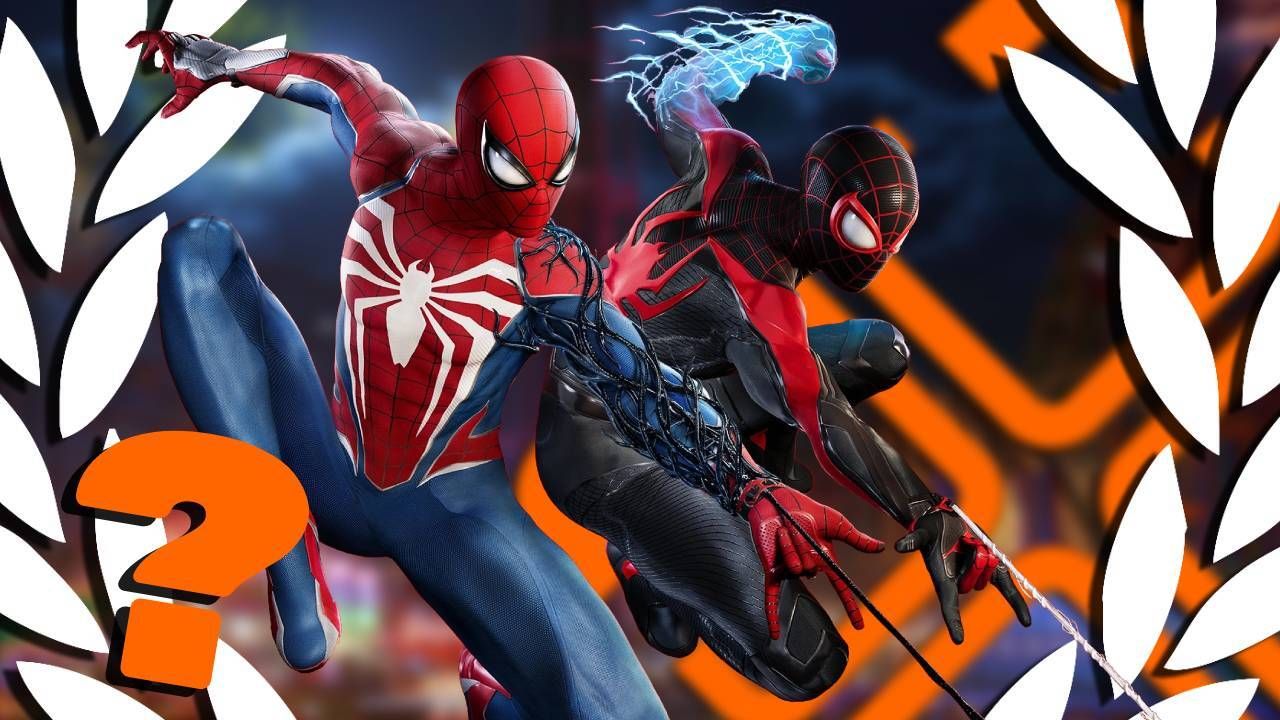
When it comes to The Game Awards’ Game of the Year, Spider-Man 2 finds itself in the same position the original game did back in 2018. It’s a very good game going head to head with two great ones. Back then, it was Red Dead Redemption 2 and God of War. Now, it’s Baldur’s Gate 3 and Tears of the Kingdom. As it was five years ago, one of the two it’s up against slots into my all time top five (Baldur’s Gate 3 and Red Dead Redemption 2), and the other I don’t personally care for, despite recognising its quality. Alan Wake 2 has been touted as the dark horse in the race, but I don’t see it. I don’t expect Spider-Man 2 to win either, but that doesn’t mean it should be written off as an also ran in an all-time great year.
The modern GOTY winner has to offer something besides fun. Some technical prowess, some narrative power, some fresh ideas. But this is a medium built, primarily, on fun. Few would argue that any of the six nominees beat out Spider-Man 2 for fun alone – others may go deeper into their themes or offer more inventiveness of the form, but swinging through the city pulling off tricks provides a bigger rush than any of them, and that’s before you whip the wingsuit out.
Spider-Man is not just a slice of fun though. While I have some issues with the Symbiote Peter voice, it is a notable achievement to do something new with the Symbiote storyline after so many different versions of it. There have also been some complaints with the pacing, and I think there are two issues here: internal and external. Internally, I concede, it’s not always clear how much time passes between each set piece in the game, and therefore across the game itself. But externally, that’s a matter of how you play it.
Most people who have issues with the game’s timing have spent most of their game in the Peter-heavy storyline, then swept up the side missions once Peter hangs up his webshooters, forcing him out of retirement to get that Platinum Trophy. You could beeline Baldur’s Gate 3 or Tears of the Kingdom and have a similarly bad time. If you take on new side missions as they become available, going slow and steady (as well as utilising Miles more), everything feels more cohesive. Miles’ specific quests also give him a lot of time to shine, and show great potential for his future as Insomniac’s number one.
This isn’t a reason to vote for it, but Spider-Man 2 also has an outstanding photo mode
Then there’s the side quests themselves. They’re ‘just’ what the first game does, only better, but the first game was a GOTY nominee. That’s a solid foundation to build on, and the same philosophy as Tears of the Kingdom, even if TOTK admittedly takes bigger risks. There’s a confidence to each side mission, every single one of them different from the last and slotting in perfectly to what the game is doing at that present moment, providing variety and synergy in equal measure.
The side missions each build to a conclusion, offering true side stories rather than one-off activities that you can take or leave. They’re built up like RPG side quests too, with real depth – the flashbacks that see young Peter meeting JJ for the first time is a particular standout. These aren’t just mind-numbing tasks thrown in to make the game longer or the map more full, they are a core part of the overall experience.
But what impresses me most about these improvements in Spider-Man 2 is the narrative incorporation into gameplay. In the first game and the Miles spin-off, boss battles were just difficulty spikes in the road with some interesting set-pieces. Here, they’re part of the narrative itself. In most games, you could skip the boss battle and the story would continue unaltered. The boss was defeated, the end. But the battles against Martin Li, Scream, and Peter himself all weave the narrative into the fights themselves, so that they become part of the story, not just gameplay challenges you must overcome to continue the story. Then, of course, there’s Venom.
The cleverness of that Venom play has been lost a little in the aftermath. Wanting a Venom game is a little bit of a surface read of the situation – the whole game, there have been two elements lurking. We know Venom is going to erupt and unleash destruction, and we know that Kraven is terminally ill and intends to die in battle, yet has chosen to face two foes who do not kill. Playing as Venom humanises Harry’s transformation, leaving us as player’s responsible for Venom’s actions, and gives Kraven the send off he deserves.
Of course, Venom is not the only character we play as. Insomniac’s ability to fold new characters into decades-long narrative webs (joke for the real poindexters in the room there) is an underrated quality of its storytelling. The emphasis placed on Hailey, plus the creative and tender way her deafness is represented, is done with such ease you forget how badly other studios have struggled to represent disabilities and incorporate non-violent sections into their action gameplay. Not least the original Spider-Man, which stuttered with stealth sections, but here makes Mary-Jane, our final playable star, far more durable and accomplished.
Marvel’s Spider-Man 2 is a rank outsider for Game of the Year at The Game Awards, and in a year like 2023, maybe it should be. But it seems to be being dismissed out of hand as ‘just a superhero game’, and that does Insomniac’s efforts a disservice. This is the most story-driven and kinetic a superhero game has ever been, and it deserves to be remembered as the cream of 2023’s exceedingly rich crop.

